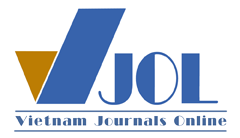Highly effective graphene membrane for transformer oil purification
DOI:
https://doi.org/10.51316/jca.2023.028Keywords:
Adsorbent, Graphene membrane, transformer oil, purificationAbstract
A highly effective adsorbent comprised of the Graphene membrane was created using the sonification method in this study. For all we know, the resulting Graphene membrane was employed as an adsorbent for transformer oil purification for the first time. The quality of the treated oil was evaluated through several factors, such as acid number TAN(mg KOH/g), color, breakdown voltage, and viscosity. The results indicated that the Graphene membrane exceeded the other commercial adsorbents in terms of purifying capacity. Several reasons, including the unreduced oxygen functional groups, vacancy defects on the surface of the Graphene flake, the high specific surface area, and the proper pore size of the Graphene membrane for oil refining, might explain this exceptional outcome. Furthermore, the 3D structure of the Graphene membrane can extend the residence purification time of the transformer oil, assisting in the improvement of the purification capability of the Graphene membrane.
Downloads
References
Rafiq, M., Lv, Y. & Li, C. A Nanofluids, J. Nanomater. 3 (2016) 1–23. https://doi.org/10.1155/2016/8371560
Safiddine, L., Ziane-Zafour, H., Rao, U. M. & Fofana, I. Energies 12 (2019) 368-374. https://doi.org/10.3390/en12030368
Liu, Q., Venkatasubramanian, R., Matharage, S. & Wang, Z. Energies 12 1665 (2019). https://doi.org/10.3390/en12091665.
Salvi, S. & Paranjape, A. P. International Journal of Electrical and Electronics Engineering (2017). https://doi.org/10.14445/23488379/IJEEE-V4I3P105
Oumert, L. et al, IET Gener. Transm. Distrib. 11 (2017). https://doi.org/10.1049/iet-gtd.2016.1995
C. Laurentino, A. et al, Process Saf. Environ. Prot. - PROCESS SAF Env. PROT 85 (2007) 327–331. https://doi.org/10.1205/psep06057
Sulaiman, A.-Z., Noura, H. & Fardoun, A. A. 2011 World Congr. Sustain. Technol. WCST 2011 (2011). https://doi.org/10.1109/WCST19361.2011.6114241
Fofana, I., Wasserberg, V., Borsi, H. & Gockenbach, E. Electr. Insul. Mag. IEEE 20 (2004) 20–30. https://doi.org/ 10.1109/MEI.2004.1266362.
I Hafez, A., S Gerges, N., Elnagar, K., E Mohamed, S. & Hashem, Int. J. Adv. Sci. Tech. Res. 5 752 (2015). http://www.rspublication.com/ijst/index.ht
Ramesha, G. K., Vijaya Kumara, A., Muralidhara, H. B. & Sampath, S. J. Colloid Interface Sci. 361 (2011) 270–277. https://doi.org/10.1016/j.jcis.2011.05.050
C.R., M., M., L., Y.L., J., L., S. & R.T., R. K. Mater. Chem. Phys. 194 (2017) 243–252. https://doi.org/10.1016/j.matchemphys.2017.03.048
Gupta, K. & Khatri, O. P. J. Colloid Interface Sci. 501 (2017) 11–21. https://doi.org/10.1016/j.jcis.2017.04.035
Ali, M. M. & Sandhya, K. Y. RSC Adv 4 (2014) 51624–51631. https://doi.org/10.1039/C4RA05702C
Vinh, L. T., Khiem, T. N., Chinh, H. D., Tuan, P. V. & Tan, V. T. Mater. Res. Express 6 (2019) 075615. https://doi.org/10.1088/2053-1591/ab1862
Sebastian, N., Yu, W.-C., Hu, Y.-C., Balram, D. & Yu, Y.-H, Ultrason. Sonochem. 59 (2019) 104696. https://doi.org/10.1016/j.ultsonch.2019.104696
Rivera, L. M. et al, ArXiv190201850 Cond-Mat Physicsphysics (2019). https://doi.org/10.48550/arXiv.1902.01850
Stobinski, L. J. Electron Spectrosc. Relat. Phenom. 195 (2014) 145–154. https://doi.org/10.1016/j.elspec.2014.07.003
Emiru, T. F. & Ayele, D. W. Egypt. J. Basic Appl. Sci. 4 (2017) 74–79. https://doi.org/10.1016/j.ejbas.2016.11.002
Hsu, S.-H. et al. Sep. Purif. Technol. 109 (2013) 129–134. https://doi.org/10.1016/j.seppur.2013.03.005
Guliyev, N. G., Ibrahimov, H. J., Alekperov, J. A., Amirov, F. A. & Ibrahimova, Z. M. Int. J. Ind. Chem. 9 (2018) 277–284. https://doi.org//10.1007/s40090-018-0156-1
Blanco, I.. J. Compos. Sci. 4 (2020) 42. https://doi.org/10.3390/jcs4020042
Dou, Z. J. Mater. Chem. A 8 (2020) 15942–15950. https://doi.org/10.1039/D0TA03617J
Downloads
Published
Issue
Section
How to Cite
Share
Funding data
-
National Foundation for Science and Technology Development
Grant numbers 104.03-2018.350











